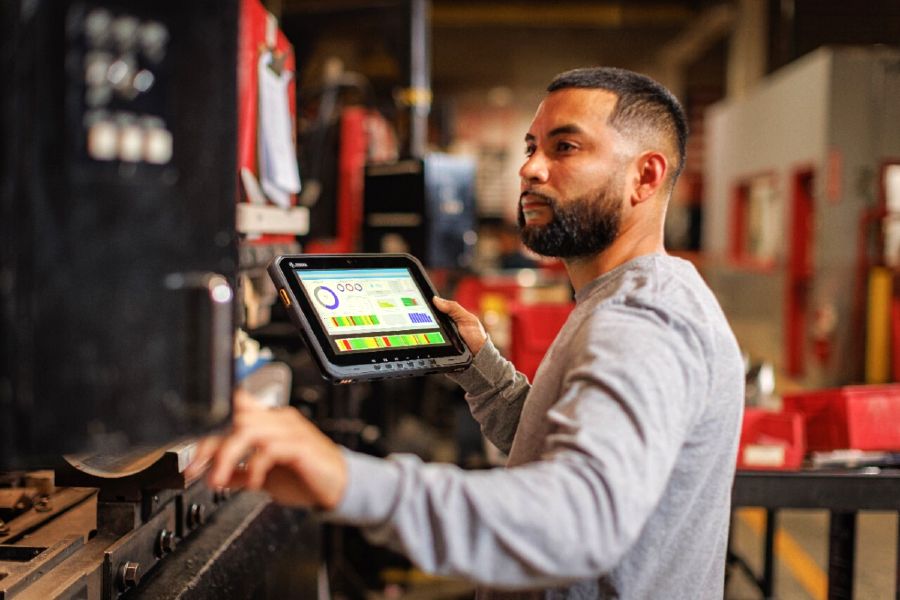Rudolf Schambeck, a Senior Channel and Market Development Manager at Zebra Technologies, outlines several reasons why automotive manufacturers are deciding to turn their attention to machine vision.
Automotive manufacturers are steadily accelerating to achieve new levels of service, speed and efficiency while maintaining quality assurance standards. It’s a challenging road. And let’s not forget the hurdle of ongoing labour shortages.
It is a challenge requiring the automotive industry to work in new ways, leveraging machine vision in particular, among other technology solutions. The timing is right as automotive manufacturers are investing in technology innovation with seven-in-10 set to increase their tech spend in 2023.
Why Machine Vision and Why Now?
We know business leaders in the automotive industry want better data-driven cultures and visibility of data across IT and operating technology. Overall, seven-in-10 automotive industry decision-makers agree digital transformation is a strategic priority. They’re looking at an array of solutions, but machine vision is the technology that made the largest leap in usage.
Zebra’s Global Automotive Manufacturing Vision Study revealed that 24% of original equipment manufacturers (OEM) globally were using machine vision, and 44% plan to use it by 2027—a staggering increase of 83%. It shouldn’t be surprising, as the industry must keep up with the step-change in the automotive industry as it moves from manufacturing only internal combustion engines (ICE) to a combination with electric vehicles (EV).
Let’s take a look at three reasons why machine vision is leading auto manufacturers on their transformation journey providing better efficiency and accuracy while addressing the labor shortage.

Out-of-the-Box Efficiency—Data Science Degree Not Required
The new breed of machine vision software and hardware is infused with deep learning which is a type of artificial intelligence (AI) that mimics the human brain in learning how to see, understand and analyse images at speeds and levels of accuracy not possible for humans to reach without the help of technology.
It’s leveraged in the auto manufacturing process to identify objects, defects and anomalies, with tools that are ready straight out-of-the box. That means you don’t have to be an expert data scientist to use it– auto manufacturing engineers, assembly line operators, technicians and others can leverage its power and work like data and AI specialists.
For example, optical character recognition (OCR) software is powered by deep learning built on a convolutional neural network that’s pre-trained using thousands of different image samples. This enables the user to create a robust OCR application in just a few simple steps and does not require machine vision or deep learning expertise.
Automotive suppliers and OEMs are already leveraging these new solutions on the astounding amount—about 30,000 parts—needed to assemble one automobile. An out-of-the-box machine vision deep learning solution can quickly and critically analyse auto parts, products and more on the production line and detect defects, errors and anything else that falls short in terms of quality, compliance, and safety. Even minuscule details like improper use of sealants or adhesives that are extremely difficult for a human eye to detect can be detected by modern machine vision. It’s a fast, reliable, simple-to-use solution that increases the level of quality, speed and efficiency on the production line. Even better, it’s at its best with people overseeing the process.
Exceptionally Accurate Quality assurance is a top priority for auto manufacturers, with seven in ten saying they plan to increase quality assurance measures by 2027. There’s simply no room for error in auto manufacturing. The design and assembly of each and every vehicle must be perfect. And the level of detail required to evaluate each part that goes into the build, in mere seconds, is hard to imagine.
Take “the marriage,” which is the process that joins the engine to the chassis of an automobile and is critical to manufacturing integrity and requires precision. Machine vision cameras on the bottom of a vehicle, for instance, would inspect the “fixing points” where the parts are joined, ensuring that when the engine is placed, it sits perfectly on the right fixing points on the chassis with no deviation.
Machine vision can (and should) be leveraged everywhere auto components are put together—caps, bolts, screws, windows—ensuring there’s no defects and are being used in the right scenario, on the right spot, in the right position and in the right way.
Leveraging Labour’s Value
Manufacturers need to get more out of their plants. It just has to be done with fewer people because new workers are simply not there. Machine vision augments workers by automating dull, repetitive or physically demanding tasks, giving workers the opportunity to take on jobs that create more value. For example, it’s more valuable for workers to focus on solving problems with auto parts rather than spending their time detecting them along an assembly line. The value is in creating the car—not moving or inspecting its parts.
There’s no doubt the automotive manufacturing ecosystem is undergoing a seismic shift with huge hurdles to cross. This includes essentially running two distinct manufacturing processes – one for traditional gasoline/diesel vehicles and the other for next generation electric, hybrid and autonomous self-driving vehicles. The pressure to meet regulations and do more, faster with less labour is possible with the right technology—and right now, it’s machine vision.
Talk with Rudolf directly on Linkedin, and read more about Zebra’s machine vision solutions here.





